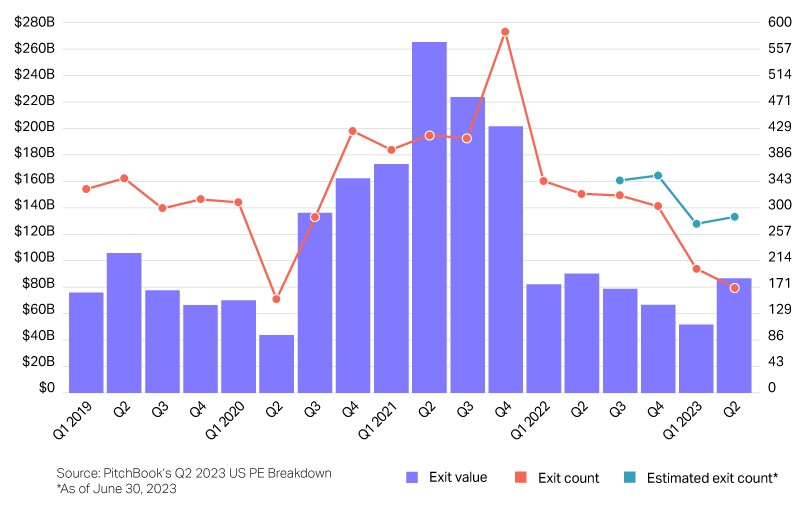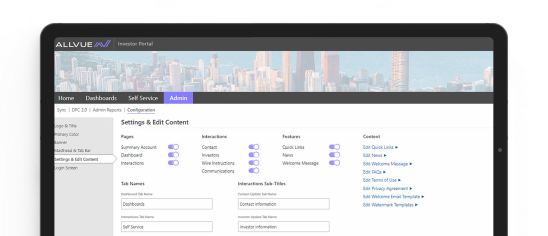The private equity investment lifecycle is about playing the long game, and it all culminates with a private equity exit. After years of holding a portfolio company and intense searching for the right timing and opportunity, the time will come to sell the asset and hopefully achieve a healthy return to pass onto investors.
What goes into such high-stakes process? Read on for our breakdown of the private equity exit.
What is a private equity exit?
A private equity exit represents the sale or other means of letting go of an asset to realize a return for the fund and its investors. In the world of private equity, managers typically hold onto their assets – generally portfolio companies – for five to seven years, and in some cases up to 10. Over that time, they are aiming to grow value in that asset by making operational changes, streamlining a company’s product or service line, restructuring the organization, and more.
With what is hopefully a higher-value asset on their hands after all that work and strategy, the manager then looks to part with the asset through a sale, IPO, or other means.
What are common private equity exit strategies?
When considering private equity exit opportunities for a portfolio company, private equity managers typically look to a few common strategies. These strategy classifications make up the majority of the private equity exits we see in the industry.
IPO
One popular but work-intensive way to exit a portfolio company is to file for an initial public offering (IPO) so that the organization can be listed as a publicly traded company on a stock exchange. A valuation team determines what the company should debut at on the chosen stock exchange, and a price per share is given depending on how many units of stock are issued.
Strategic Sale
In a strategic sale, the GP sells the company – typically in full – to a buyer who hopes to build the offering into its own business. For example, a PE firm may sell an email marketing platform to a larger marketing automation company looking to build out its capabilities.
Secondary buyout
In a secondary buyout, the private equity manager sells its stake in the portfolio company to a different investment manager, keeping the company in the world of private equity. The PE buyer then starts its own approach to creating value in the asset. In secondary buyouts, deal terms are often kept undisclosed.
READ MORE: Our Guide to Private Equity Secondaries
Management buyout
When a private equity manager exits an investment via the management buyout (MBO) route, they sell the company or their stake in it to the company’s management team, often via a leveraged buyout financing model.
READ MORE: What Is a Leveraged Buyout?
Partial exit
When taking the partial exit route to exit a portfolio company, the private equity manager can cash in for a return by selling off part of their stake in the business, typically via a secondary sale. This strategy offers the ability to continue shaping value in the asset while also reaping some return on the investment up front.
Top private equity exits from 2023
This year got off to a slow start for private equity exits, but both exit count and exit volume ticked up in Q2. See below for some of 2023’s biggest exit transactions and download the list for your own reference and analysis.
Kodiak Gas Services
Firm: EQT
Private equity exit strategy: IPO
Portfolio company valuation at exit: $1.2B
Date of exit announcement: June 29, 2023
ODDITY
Firm: L Catterton
Private equity exit strategy: IPO
Portfolio company valuation at exit: $2.3B
Date of exit announcement: July 19, 2023
Adenza
Firm: Thoma Bravo
Private equity exit strategy: Strategic sale
Portfolio company valuation at exit: $10.5B
Date of exit announcement: June 12, 2023
Nextracker
Firm: TPG Rise Climate
Private equity exit strategy: IPO
Portfolio company valuation at exit: $638M
Date of exit announcement: February 9, 2023
Savers Value Village
Firm: Ares Management
Private equity exit strategy: IPO
Portfolio company valuation at exit: $4B
Date of exit announcement: June 29, 2023
Apptio
Firm: Vista Equity Partners
Private equity exit strategy: Strategic sale
Portfolio company valuation at exit: $4.6B
Date of exit announcement: June 26, 2023
The Snowfox Group
Firm: Mayfair Equity Partners
Private equity exit strategy: Strategic sale
Portfolio company valuation at exit: $621M
Date of exit announcement: June 13, 2023
ASPEQ Heating Group
Firm: Industrial Growth Partners (IPG)
Private equity exit strategy: Strategic sale
Portfolio company valuation at exit: $418M
Date of exit announcement: May 1, 2023
ECM Industries
Firm: Sentinel Capital Partners
Private equity exit strategy: Strategic sale
Portfolio company valuation: $1.1B
Date of exit announcement: May 18, 2023
Simply Self Storage
Firm: Blackstone
Private equity exit strategy: Strategic sale
Portfolio company valuation: $2.2B
Date of exit announcement: July 24, 2023
Worldwide Flight Services
Firm: Cerberus Capital Management
Private equity exit strategy: Strategic sale
Portfolio company valuation: $2.4B (€2.2B)
Date of exit announcement: April 3, 2023
Private Equity Exit Values

The importance of data in a private equity exit
Exiting an investment in private equity is a momentous, high-stakes event for the GP, its LPs, and the portfolio company itself. After a marathon journey of holding an asset for multiple years, creating new value in that asset, and then seeking out the right buyer at a fair valuation, private equity teams are yearning to see payoff of this work in a healthy return on the investment (ROI).
For all the patience and hard work that goes into flipping an asset in this manner, it pays to have an integrated technology suite supporting the day-to-day operations of the private equity fund. Allvue’s middle- and back-office solutions are purpose built for private equity, helping your teams stay in the loop on portfolio monitoring, fund accounting, and investor reporting, carrying you through the fund lifecycle smoothly.
Don’t forget to download our biggest exits list below. To see our software in action, request a demo.


